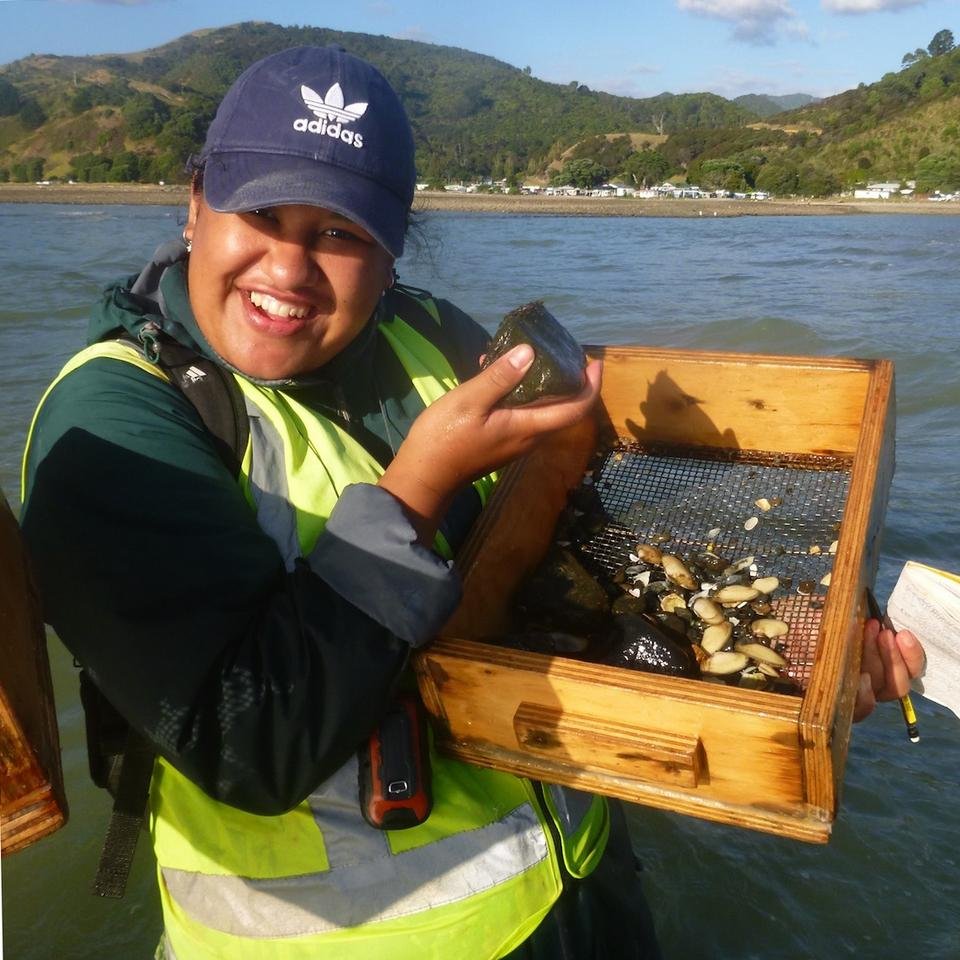A new contract with Fisheries New Zealand will see our work surveying pipi and cockle populations across northern North Island beaches continue for another 3 years.
Katrin Berkenbusch has been leading the surveys for the past 8 years, supported by a team of field assistants and local helpers. Many of the team come back every year for the intense 3-week monitoring trips.
She says one of the really exciting parts of last summer’s survey was having Tyla Hill-Moana, an early-career scientist at Dragonfly involved. (Tyla is pictured at Te Mata beach in the photo above.)
“Tyla took part in the trips and helped with some of the reporting. Although we do lots of data science at Dragonfly, this survey is one of the few projects where we collect data and take it all the way through the analysis. It’s a good way to learn about the whole process of data informing decision-making.”
Two new monitoring sites were added last summer, prompted by concerns about declining numbers of the bivalves. One new site was in Hokianga Harbour in Northland. The other was on the west coast of Coromandel Peninsula, at Te Mata and Waipatukahu. Here, a rāhui currently bans all shellfish collection.
“At the new sites, we worked closely with iwi to find out where suitable sampling areas would be. It’s quite a challenge, because the sites have to be easily accessible at a normal low tide and in an area that’s targeted by fishing. That’s because this monitoring is focused on how the fished beds are faring rather than studying the total population.”
The properties of sediment on a beach are important for the cockles living there. For example, the grain size and the amount of organic matter may affect the number and density of cockles in an area. High amounts of fine sediment in particular are thought to be detrimental to filter-feeding cockles.
“When we started the surveys, I suggested we monitor the characteristics of the sediment at the same time as the bivalves. We were curious to know about the type of sediment at the beaches, if it was changing, and if this change could explain any changes we observed in the cockle populations.”
The results of this multi-year study have now been published. Katrin says that while there were some changes in the sediment, they weren’t significant enough to explain the declines in cockle populations that were recorded at some sites.
In February 2020, Katrin attended a meeting with Fisheries New Zealand and the local community to discuss the status of cockles at Cockle Bay in Auckland.
“I presented the results of the monitoring and although the population appears to be stable, the seasonal closure of this beach has now been extended to be year-round. This experience brought home to me again how relevant the surveys are to people and how much the shellfish resource means to them.”
Read more
Report about sediment:
Previous new stories about our shellfish monitoring and modelling work:


